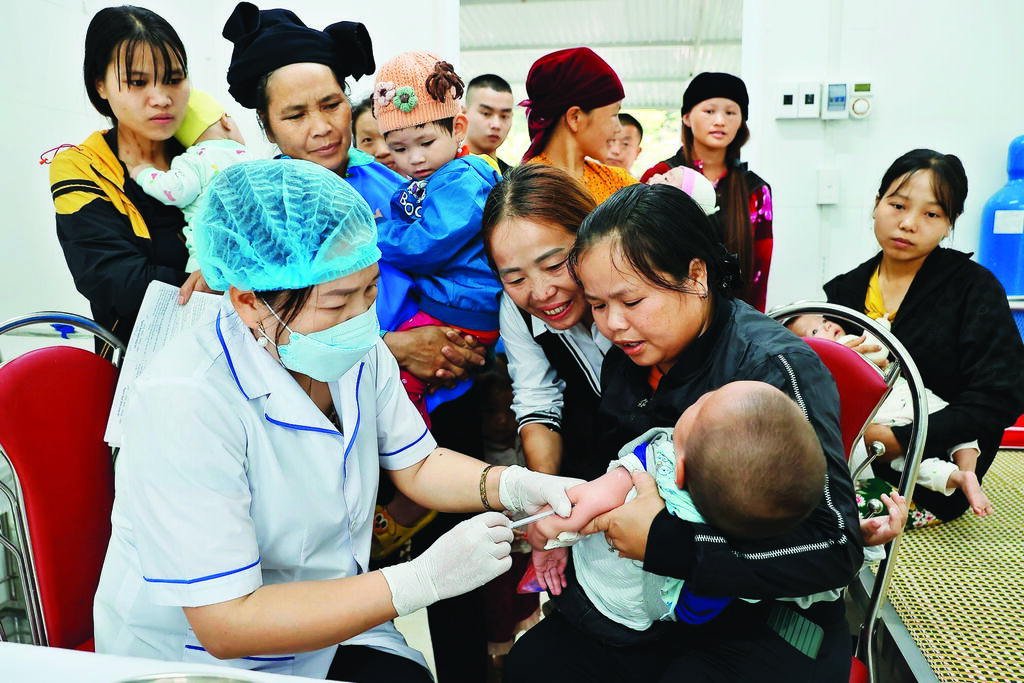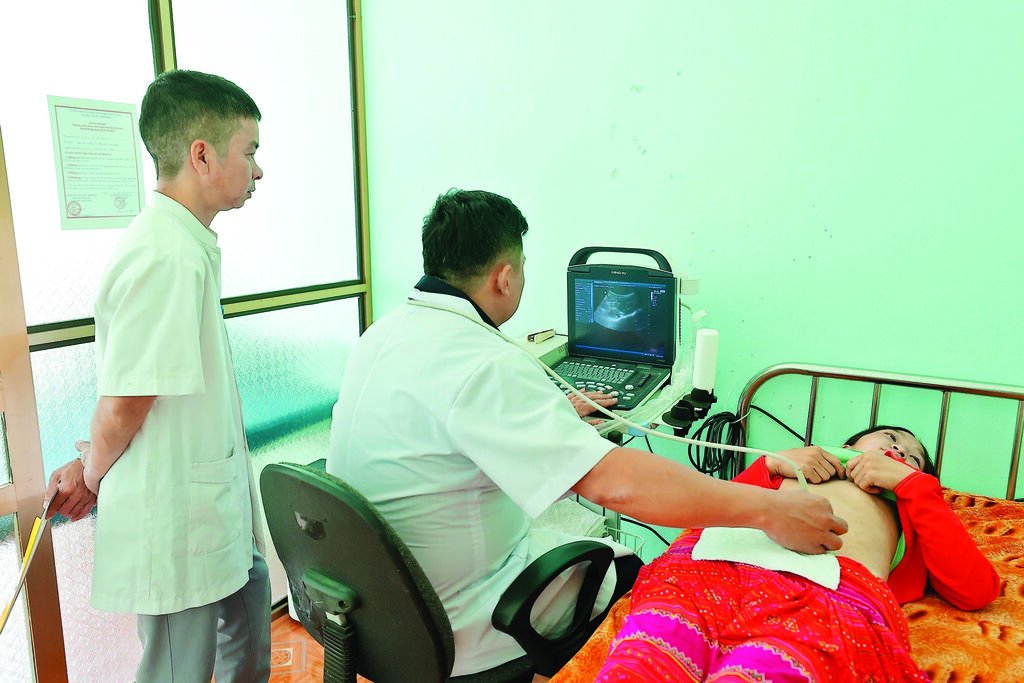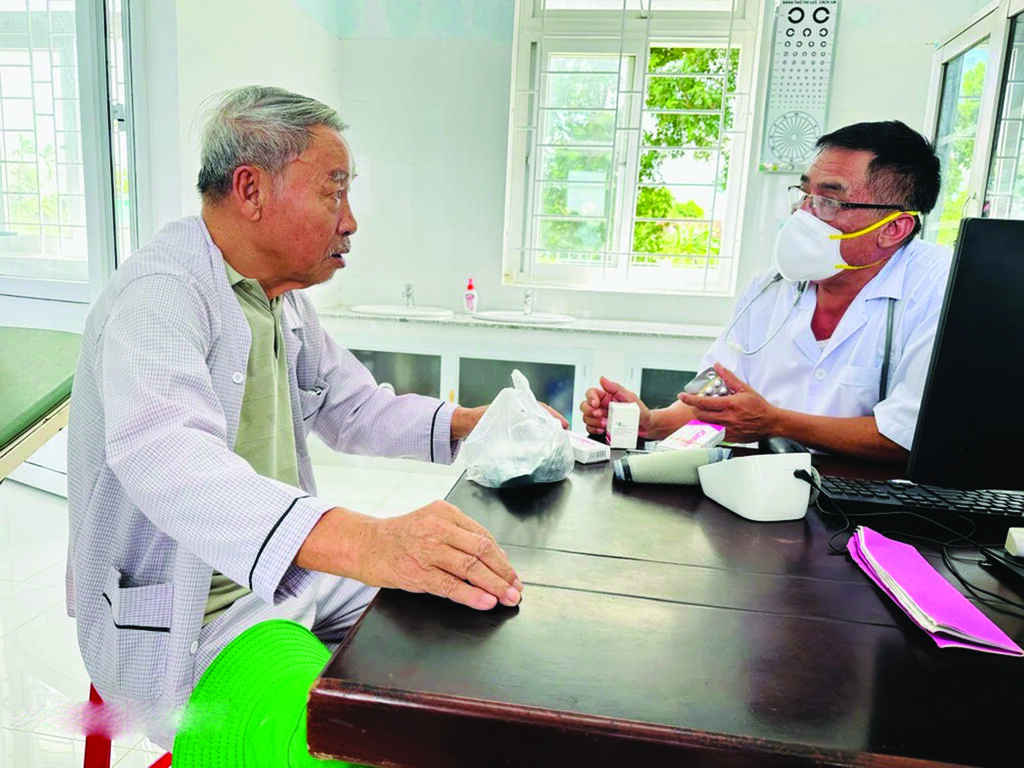>> A plan to ease hospital congestion and improve health care
>> Mental health care for medical workers
>> Thu Duc City’s Ambitious Health Strategy
In an interview with a correspondent of the Vietnam News Agency, Phan Le Thu Hang, deputy director of the Planning and Finance Department of the Ministry of Health and director of the project management committee at the central level, gave an overview of the situation.
Could you please inform us of the details on the progress of the investment and development project of the primary health care system implemented in 13 provinces?
The project is designed to improve the quality and efficiency of health services in the primary health care network of 13 provinces, namely Ha Giang, Bac Kan, Son La, Yen Bai, Hoa Binh (North), Quang Binh, Quang Tri, Quang Ngai, Ninh Thuan (Central), Tra Vinh, Hau Giang, Bac Lieu and Long An (South).
The project adopts a comprehensive investment strategy: modernization of infrastructure, renewal of medical equipment, training of health personnel, improvement of health education communication activities, new laws on primary health care and piloting of innovative models of primary health care service delivery. It is expected to strengthen the capacity of the primary health care network, thus ensuring health, increasing life expectancy and improving the quality of life of people living in disadvantaged areas.
In terms of the scale of funding, this is one of the largest investment projects in the health sector, with a budget of approximately USD 120 million. This reflects the health sector’s strategy of prioritizing investment resources to provide essential health services in difficult areas.
This project is considered one of the first in the health sector implemented under a new governance model that maximizes local autonomy, in which provinces act as the main investors for sub-projects implemented in their areas. This governance model promises to have a long-term positive impact on the project management capacity of localities, which previously relied heavily on management structures at the central level.
In your opinion, what are the first results of the project?
The project was implemented on May 18, 2020, coinciding with the outbreak of the COVID-19 pandemic, which posed significant challenges in the first two years. Despite this, the project benefited from decisive guidance from the Ministry of Health, the efforts of the 13 provincial people’s committees, the commitment of the central project management unit and provincial project management councils, and enthusiastic support from donors.
After more than four years of implementation, the project has achieved the expected results. The latest evaluation conducted by the Ministry of Health and the World Bank in May 2024 shows that despite serious challenges such as COVID-19 and changes in the government’s official development assistance (ODA) disbursement and project management policies, the project is still considered to meet the requirements. The World Bank recognizes that it is the best evaluated among all World Bank-financed health projects in Vietnam.
In terms of investment, 412 construction projects, including upgraded or newly built health posts and medical centers in 109 districts/cities in the 13 project provinces, have been completed and put into operation, accounting for more than 86% of the planned projects. The remaining projects are under construction and are expected to be completed by November 2024. Most provinces have also signed contracts to provide necessary equipment for local health posts.
How did the project strengthen the capacities of primary health care staff?
The capacity building component of the project, which is supported by grants from the World Bank and co-financiers, aims to address the capacity gap among primary health care staff. Training under the project focuses on improving service delivery and managing priority health problems at the primary level, such as hypertension, diabetes, cervical cancer, maternal and child health, tuberculosis, chronic obstructive pulmonary disease, acupuncture and rehabilitation.
To ensure sustainable capacity building, the project is developing a comprehensive training plan with a two-stage approach: training of provincial trainers and training of primary health care staff. This method ensures that after the training, provincial trainers can conduct capacity building sessions for all communal staff in the thirteen provinces of the project. The coverage rate of trained communal health staff is high. Provincial trainers, in addition to training communal staff, continue to supervise and support them after the end of the project to ensure sustainable capacity maintenance.
To date, 1,857 provincial trainers and district supervisors have been trained (96% of the total training plan) as well as 24,346 municipal health workers (85.2% of the provinces’ needs).
Regarding initiatives to improve the quality of health services at the commune level, the project designed and piloted a dashboard for health posts to self-assess the quality of services, enabling them to plan improvements for unmet criteria. The World Bank and the Ministry of Health rated this intervention as a strength.
In terms of coverage, by the end of 2024, the percentage of health posts implementing the scorecard is expected to reach 56%, more than double the initial plan.
In terms of political impact, due to the exceptional results obtained in the 13 provinces of the project, the Ministry of Health decided to carry out an in-depth evaluation of this initiative in order to have a scientific basis for transposing it on a larger scale.
Considered Vietnam’s most successful health project funded by the World Bank, what are the valuable lessons learned from this success that other projects could learn from?
After four years of implementation in an unfavourable context, several valuable practical lessons have been learned, not only for the remaining phase of the project, but also for other programmes and projects in the health care sector.
The success of the project depends on the governance capacity of the participating localities, which act as the main investors for the sub-projects in their areas. Specifically, these are the leadership and coordination capacity of the provincial people’s committees, the coordination capacity between the relevant provincial departments (departments of finance, construction, health, provincial project management councils), and the management capacity of the provincial project management councils.
Provinces must persistently pursue long-term objectives, while demonstrating flexibility in implementing solutions to adapt to changing contexts and environments. Regular and continuous coordination, support, guidance and supervision from the central project management unit and the World Bank for the provinces are crucial, particularly given the relatively limited project management capacities of many provinces.
In particular, the quality checklist model applied to communal health posts, designed by experts from the central project management unit, and the model for managing and treating non-communicable diseases in communal health posts with the technical support of the units were assessed as strengths of the project.
Huong Linh – Thuy Giang/CVN





